Text
Golden Ratio in Cinematography
Golden ratio, golden spiral, and golden ratio grids almost everyone is familiar with this technique, especially the photographers. It creates balance between the model/focus of the image and those that are at the edge of the spiral line. However, it is not only applied in photography, but also used in film making. Camera shots and angles are also being guided using the golden ratio. It gives the same essence as photography to film making, and it is one the techniques used by film production staff to produce a high-quality film.

Golden Ration influences the visual, aesthetics and cinematography of the film. It is one of the essential methods in controlling the visual language and proportions of objects in the film. The rule of thirds or the grids of Golden ration provides significant changes in the visuals of the scenes and using it accurately to emphasize the moods or the situations of the scenes can greatly affect the overall visual impact of the film. One of the ways it is applied in the film is by using the Fibonacci spiral shape over the frame.

By: Riel Anne Mag-isa
SOURCES:
Dempsey, J.(2020, October). The Golden Ratio in Photography: A Comprehensive Guide. Retrieved from https://www.photoworkout.com/golden-ratio-photography/#h-the-golden-ratio-in-photography-conclusion
Cartharis, G. (2014). The Golden Ratio & Cinematography. Retrieved from https://prezi.com/rgbo9he_rch1/the-golden-ratio-cinematography/
0 notes
Text
How Math Brings Life to Film making
Film making is one of the biggest industries in the world, it is one of the largest sources of entertainment in the world and every country have their fair share of produced films of every genre. According to world atlas United States and Canada are the countries with largest film industries followed by China, and United Kingdom. Film making requires meticulous process more than we thought and it is composed of knowledgeable individuals who formed a team to produce a single film. Film making is not just about making written stories or script into film or series; it is not just about acting. It requires the use of mathematics whether it is an animation films, non-fiction and fictional films, and live action films.

Film making is filled of diverse categories and genre, half of the produced films in the entertainment industry is animation films or 3D films. Unlike standard films, animation films require more meticulous and accurate use of math throughout the whole film. From making of a character to every movement and arrangement of the settings, mathematics is being used. Every illustration and shapes are made with the use of geometry techniques and all parts of the illustrations are used with techniques to emphasize the dimensional aspects of the illustrations. According to computer scientist Tony DeRose of Pixar Animation Studios, some of the techniques they used in their animation films are integral calculus for simulation of lights in the environment, subdivision surfaces, and harmonic coordinates for the movements of objects and characters in the film. He added that there is indeed a lot of math used in making a single film such as trigonometry, algebra, integral calculus, etc.

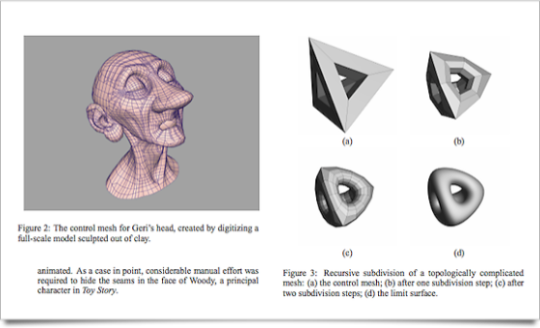
Many people might not realize it yet, but mathematics is indeed used everywhere and almost everything are either composed of or made using mathematics. The math itself can be a subject of a film, for instance when the story or the characters apply or involve math in solving the conflict of the story. Many individuals despises mathematics but they sometimes unconsciously use math even in the simplest things.
By: Riel Anne Mag-isa
Sources:
WorldAtlas,(n.d.). Largest Film Industries in the World. Retrieved from https://www.worldatlas.com/articles/largest-film-industries-in-the-world.html
Mathematical Association of America, (n.d.) .Math in the Movies. Retrieved from https://www.maa.org/meetings/calendar-events/math-in-the-movies?fbclid=IwAR1XmFmLTr4_0CH0XW3NjG9yOPEAU4WWJtmJhEEmLts4hWGUYBan43uvqaA
0 notes
Text
Mathematics and outdoor photography experience

Mathematics can be seen in our every day lives. It can be seen in leaves and even tires of cars and trucks. By taking photos, we are able to help with education purposes in order to teach math. We are able to learn about symmetry, geometry, perspective just by looking at a photograph.



Without mathematics, our photos and structures around us would not appeal to the eyes. Structures would not be able to hold up if it were not for the math involved in it either.
Source:
Meier, A., Hannula, M. S., & Toivanen, M. (2018). Mathematics and
outdoor photography experience – exploration of an approach to
mathematical education, based on the theory of Dewey’s
aesthetics. LUMAT: International Journal on Math, Science and
Technology Education, 6(2), 146–
166.https://doi.org/10.31129/LUMAT.6.2.317
1 note
·
View note
Text
An Ode to Math, Mathematics in Nature
In the world that we live in it often shows models, patterns and phenomena we see in mathematics. A vast majority of living organisms on earth show a form of symmetry in one way or another. Symmetry is all around nature, from microscopic organisms like volvox that exhibits spherical symmetry and to humans who gives example to a bilateral symmetry. Different organisms have their own certain symmetry depending on their own situation. An example can be a starfish with a rotational symmetry, and because of this will make attacking prey from multiple directions easier for the starfish.

Mathematical sequences is another concept that show up a lot in nature. The Fibonacci sequences a clear example, it involves adding the two previous numbers in the sequence to arrive at the next number i.e.: 1,2,3,5,8, etc. In nature this commonly known as the golden rule, a clear example of this is the number of petals on the flower.

Many animals use mathematical ratios as both for camouflage and predation. An animal like the diamondback rattlesnake use perfect geometric ornamentation to blend into their environment. These organized patterns and color schemes can help animals to also attract mates and repel predators. Mathematics also plays a big role in genetics and evolution. By using mathematical models, scientists are able to understand the population numbers as well as peoples physical characteristics within populations fluctuate.
By: Gab Baun
SOURCE:
Alex. (2019). An Ode to Math, Mathematics in Nature. Minute School. Retrieved from https://www.minuteschool.com/2019/09/an-ode-to-math-mathematics-in-nature/
0 notes
Text
Math in Movies
It is safe to say that math plays huge role in movies, most especially in animated movies. According to computer scientist Tony DeRose of Pixar Animation Studios, “In each of these animated films constructed entirely on computers, trigonometry helps rotate and move characters, algebra creates the special effects that make images shine and sparkle, and integral calculus helps light the scenes.” The process of animation is a grueling job that would take up to four years from start to finish. Before we jump into animation in computers, artists first create thousands of hand-drawn pen-and-paper sketches or, Photoshop images and quick animations to flesh out the story.

DeRose continued by saying, "As the story starts to gel, the art department starts to fire up . . . to create characters and designs for the worlds the characters live in." The hand-drawn sketches become the backbone to build the digital characters, which is needed in the process to constructing physical marionettes with strings to govern their motions. The digital strings serve as a control system for animators to use to define a characters movement, from bending a knee to raising an eyebrow. A character would usually have 300 degrees of freedom with perhaps 700 controls, that’s about 700 strings an animator has to deal with.

Now let’s talk about the mathematics in animation, DeRose states a few examples like the simulation of how light bounces in a specific area (Integral calculus) to show a flat surfaces consistently (Subdivision surface) and making characters move smoothly (Harmonic coordination). The way light bounces around in an area is crucial in illumination. "Mathematically, for every point y and for every other point z, we need to compute how much light is traveling from y toward z, and we have to do that for every pair of points in the environment. In a continuous setting, this turns into an integral, the rendering equation," DeRose states. The geometric technique of subdivision surface is used by artists to create complex surfaces and complicated shapes efficiently on a computer without compromising its smoothness. This technique was inspired by the film industry, the technique of subdivision surface was first used in Geri’s Game (1999), which won an Academy Award. DeRose mentioned that Pixar recently turned to using harmonic coordinates because they are generalized barycentric coordinates that can be extended to any dimension, So basically it simplifies things for animators when they want to control the animated character.
With the rapid rise in animated movies, short films, and others, it is safe to say that mathematics is here to stay in the film industry. Who knows what the future will bring for animated films but one thing is certain for it to take a step forward mathematics is the key.

By: Gab Baun
SOURCE:
Derose, T. (n.d.). Math in the movies. Mathematical Association of America. Retrieved from https://www.maa.org/meetings/calendar-events/math-in-the-movies
0 notes
Text
PHOTOGRAPHY: THE UNIVERSAL LANGUAGE
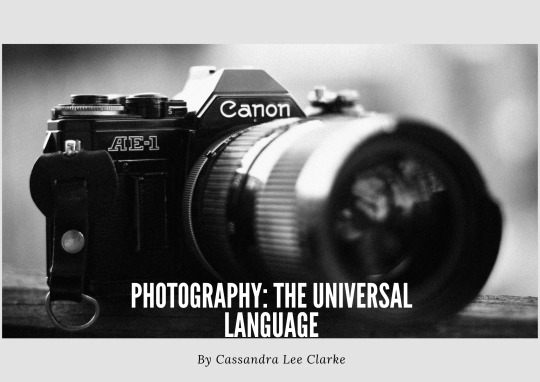
What is Photography?
Photography is the art of creating a picture by catching light with a camera, generally using a digital sensor or film. You may even picture wavelengths of light that are invisible to the naked eye, such as UV, infrared, and radio, with the correct camera equipment.
Photography's Most Important Names
The list below will be showing their discoveries and insights that have shaped how we take pictures to this day.
Joseph Nicephore Niepce

- Invented the first permanent photograph back in 1826: "View from the Window at Le Gras".

- Cameras have existed long before he was born but the flaw was that you could never record a photo with any of them.
Louis Daguerre
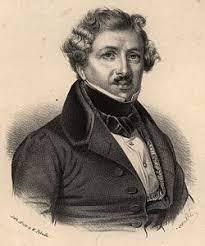
- Invented the "Daguerreotype" (1839)
- Images are attached directly to a heavily polished sheet of silver-plated copper in daguerreotypes. This invention was crucial in making photography a viable option.
Alfred Stieglitz
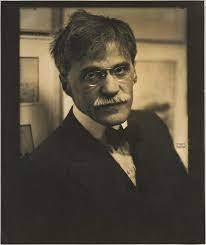
- Focused on portraiture and documentary.
- Was one of the first prominent members of the art world to recognize photography as a viable artistic tool. He felt that pictures, like paintings or music, could convey an artist's vision.
Dorothea Lange

- Focused on portrait photography.
- One of the most prominent documentary photographers. She is mostly known for taking portrait pictures during the Great Depression which happened in the 1930s. Her photographs influenced the area of documentary photography and, perhaps more than anyone else, demonstrated the camera's ability to communicate dramatic stories.
Ansel Adams
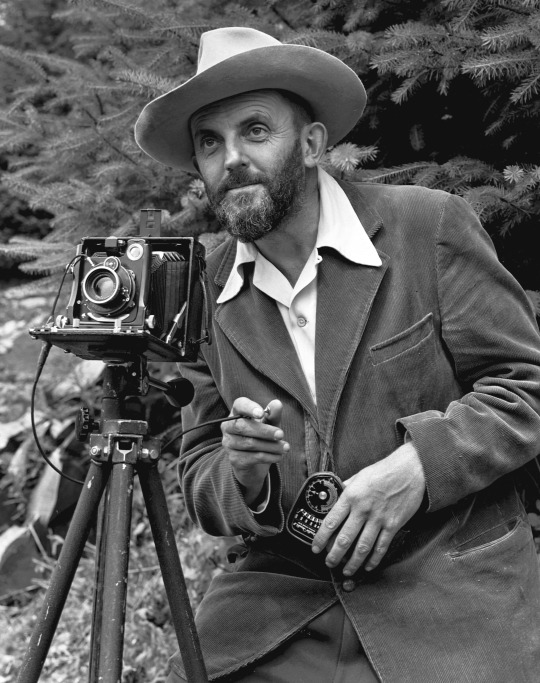
- Focused on Landscape Photography.
- He was an early promoter of the environmentalist and preservation movements in the United States, and he helped bring in an era of realism in landscape photography.
SOURCE:
Cox, S. (2021). Introduction to Photography: The Universal Language. Retrieved from https://photographylife.com/what-is-photography
0 notes
Text
Viewpoint
A lot of novice photographers probably take the most of their photographs straight-on. However, it is a good idea to start looking at subjects from different angles – switching up your position every once in a while can lead to very interesting results. There are 4 different viewpoints that photographers may use. Namely, bird’s-eye view, becoming the subject, eye level, and worm’s-eye view.
Bird's-eye view: When photographing through the bird’s-eye view, you shoot from above. This could be taken from up in the sky, such as when flying in a plane, or could simply be taken by standing on a ladder, slightly above your subject.

Becoming the subject: this point of view tends to be the most effective, especially when photographing people. To use this technique, photograph your subject from the point of view of the person interacting with the subject. For instance, if you were to take a shot of someone making dinner, take a photograph of the food as if you were the chef – perhaps even including hands in the foreground for reference. These sort of images make the viewer feel as though they are experiencing the scene themselves, and makes it easy to put themselves in the photographer’s place.

Eye level: Shooting at eye level is the most common way to photograph a subject. After all, it is typically the way we regard most subjects in our day to day lives, especially other people.

Worm's eye view: Photographing at worm’s eye view is done from below, as if you were a worm looking up at the world around you. This viewpoint makes all subjects look very large, even if they are very small in reality. As opposed to images shot from above, subjects presented in this way look as though they hold power over the viewer, and can seem very intimidating.

By: Bea Orense
Source:
4 Points of View in Photography | NYFA Photography. (2014, December 9). Student Resources. https://www.nyfa.edu/student-resources/point-view-photography/#:~:text=In%20relation%20to%20photography%2C%20’point,in%20when%20viewing%20a%20scene.&text=Subjects%20can%20be%20dramatically%20distorted%20simply%20by%20where%20you%20place%20your%20camera.
0 notes
Text
Symmetry and Pattern
Repeating patterns and mirror-image symmetry look appealing when incorporated into your photos. Here’s a few tips on how to make the most of them. Our brains are wired to look for patterns and symmetry. There are a few main types of symmetry—all are really powerful for creating great photos. Symmetry can create balance in a picture and convey a sense of calm, even a sense of unease if everything looks a little too perfect.
Symmetry isn’t always caused by reflections; rotational symmetry is seen in the spiral shapes that are often found in nature, such as the arrangement of petals in a flower, or the curve of a snail shell. You can also find symmetry in the repeating patterns made by collections of objects – both man-made and natural. For example: logs in a woodpile, clay tiles on a roof, or tidal patterns in the sand.

By: Bea Orense
Sources:
Symmetry and Patterns . FUJIFILM Digital Camera X Series & GFX – USA. (2019). FUJIFILM Digital Camera X Series & GFX – USA. https://fujifilm-x.com/en-us/stories/beginner-month-1-composition-3-symmetry-and-patterns/#:~:text=Repeating%20patterns%20and%20mirror%2Dimage,when%20incorporated%20into%20your%20photos.&text=Symmetry%20can%20also%20create%20balance,It%20just%20feels%20right.
0 notes
Text
Leading Lines
Leading lines are lines that appear in a photograph that have been framed and positioned by the photographer to draw the viewer's eye towards a specific point of interest. These lines draw the viewer’s eye in a specific direction or towards a specific area of the photograph. To use leading lines, it would be useful to understand the different types of leading lines and how they are best used. The categories of leading lines include: horizontal lines, vertical lines, diagonal lines, and converging lines.
Horizontal Lines: Horizontal leading lines are often used in nature and landscape photography. Because horizontal leading lines often stretch across the entire width of the image, they tend to be used when shooting with a wide-angle lens.

Vertical lines: Vertical lines shows power and hierarchy in a given photo. They draw the eye up or down within the frame and can be used to convey status within your picture. Vertical leading lines are often found in fashion photography and street photography.

Diagonal lines: Diagonal lines are used to create a sense of movement and change. Diagonal lines work to emphasize a sense of distance and often track from foreground to background. If you’re working with a large depth of field, try experimenting with diagonal lines to accentuate the sense of depth in your image.
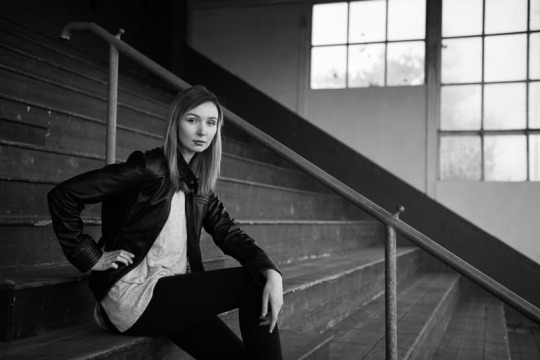
Converging lines: If there are converging lines present in your frame, it’s best practice to situate the subject of the image at the axis of these leading lines. Converging lines are very effective at drawing the eye to the point of convergence and can be a strong compositional element to include in your photographs.

By: Bea Orense
Sources:
MasterClass. (2020). How to Use Leading Lines in Photography. MasterClass; MasterClass. https://www.masterclass.com/articles/how-to-use-leading-lines-in-photography#4-types-of-leading-lines-in-photography
0 notes
Text
Balancing Elements
Placing the subject of your photo off-center creates a more interesting photo, however, it can leave an empty space in the shot. You can balance the "weight" of the subject by including another object of lesser importance to fill the empty space. If you place every element of interest in a photograph on one side or another, or more commonly by the beginners in the center of the image, you are leaving little or nothing to look at on the opposite side. This will be a unbalanced photo and might not be captivating. There are two types of balance in photography. The first is formal balance, or symmetrical balance. This is when one or more identical or similar subjects are repeated symmetrically on each side of a given point. The formal balance is most often recognized by subjects that are uniform in shape. The second type, informal balance, or asymmetrical balance, is when one or more dissimilar elements are balancing on each side of a given point. Informal balance is less obvious because the subjects are not uniform. The perfect image that uses informal balance is more appealing to the viewer compared to a symmetrical composed image.
Formal:
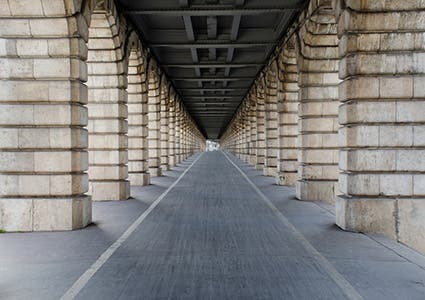
Informal:

By: Bea Orense
Sources:
Balancing Elements - Photography Composition Rules. (2021). Balancing Elements - Photography Composition Rules. Google.com. https://sites.google.com/site/photographycompositionrules/balancing-elements
0 notes
Text
Rule of Thirds

Rule which applies to the way toward making visual pictures like plans, movies, canvases, and photographs. The rule suggests that a picture should be envisioned as separated into nine equivalent parts by two horizontal lines and two vertical lines, and that significant compositional components are their intersections. Proponents of the strategy guarantee that adjusting a subject to these focuses makes more strain, energy and premium in the creation then essentially focusing the subject.
By: Bea Orense
Sources:
Nicholls, W. (2018, August 20). Rule of Thirds in Photography: Composition Tips. Nature TTL. https://www.naturettl.com/rule-of-thirds/#:~:text=In%20Conclusion-,What%20is%20the%20Rule%20of%20Thirds%3F,vertical%20and%203%20horizontal%20lines.&text=The%20rule%20indicates%20that%20you,these%20areas%20in%20a%20photo.
0 notes
Text
Mathematics in taking the perfect shot
By: Bea Orense
Don’t we all remember being told that math is used everywhere by our math teachers? Of course, some of us did believe them but I remember a lot of my classmates and I didn’t. Now, as I have gone through years of school, I can see why were told such a thing. Recently, I have seen how mathematics is used in photography, specifically the aspect of photo composition that will help in taking the perfect photo. Specifically, rule of thirds, balancing elements, leading lines, symmetry and patterns, and viewpoint.
0 notes
Text
Ellysse's Top 4 Mathematical Compositions in Film (part 2)
3.) Event Horizon (1997)
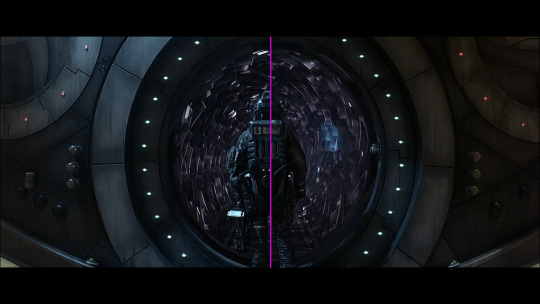


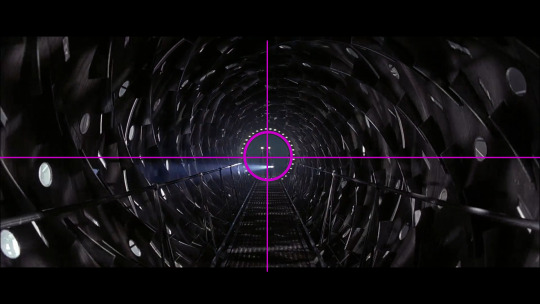
Dir. Paul W. S. Anderson
Center and symmetry
3.) Doctor Strange (2016)

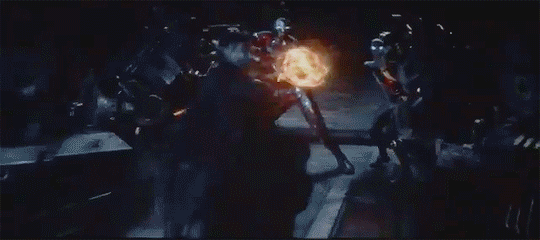


Dir. Scott Derrickson
Golden Ratio and Rule of Thirds and Odds
4 notes
·
View notes
Text
Ellysse's Top 4 Mathematical Compositions in Film (part 1)
1.) Kill Bill Vol. 1 (2003)


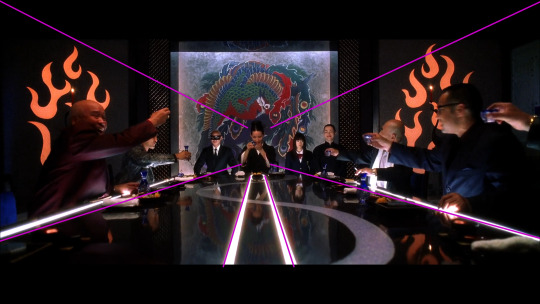

Dir. Quentin Tarantino
Leading lines and Rule of Thirds
2.) Parasite (2019)
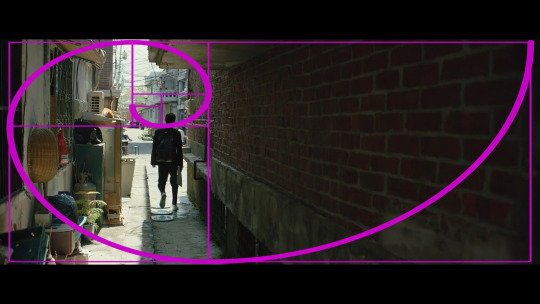

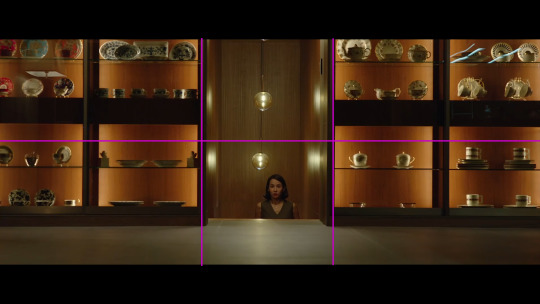
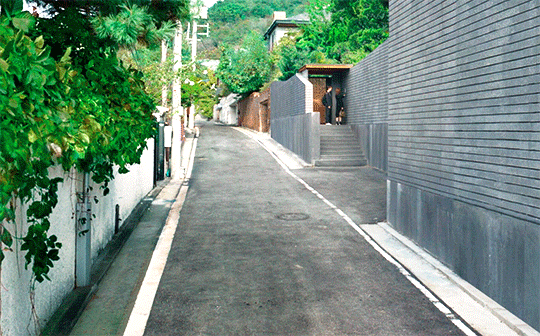
Dir. Bong Joon-ho
Golden Ratio and Rule of Thirds
#gallery#photo compositions#ellys fav part 1#film#movie#kill bill#kill bill vol 1#parasite#fotogallery
1 note
·
View note


